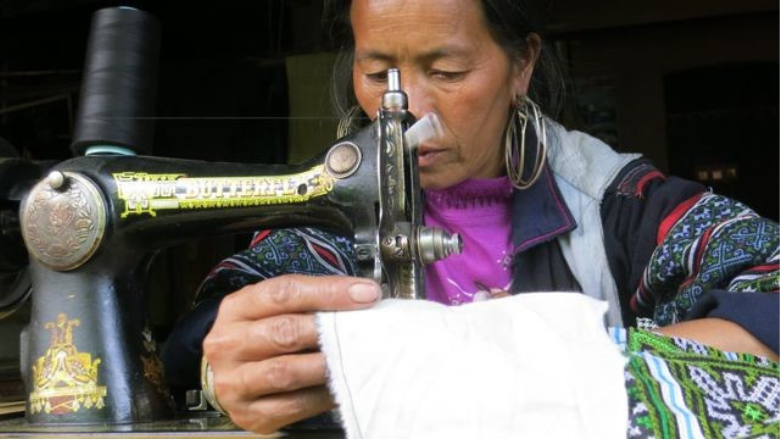Challenge
Ethnic minorities living in remote areas of the project provinces of Lai Chau, Dien Bien, Son La, Lao Cai, Hoa Binh and Yen Bai have very limited opportunities to increase their living standards due to low agricultural productivity; lack of productive infrastructure such as irrigation and roads; are vulnerable to natural disasters and climate change; and lack of access to healthcare, education and markets.
Approach
A core project activity was to organize small and marginal producers into Common Interest Groups (CIGs) around livelihood activities such as agriculture, livestock, forestry, fisheries and handicrafts to increase their share in key value chains. The project also built partnerships with government agencies, banks, agricultural extension systems, and other input service providers to enable CIGs to increase their access to finance, technical expertise, inputs, and services to boost productivity and increase production. also It further helped to establish market linkages with public, private, and cooperative enterprises to enhance the participation of poor people in value chains. The Project took a community-driven development approach, which ensured that any specific activity started and ended with the recipients themselves. Women gained a greater voice through strong representation in the Commune Development Boards and participating in the project activities designed for women groups. Ethnic minority languages were used in village meetings, trainings, and communication materials leading to more inclusive project planning and implementation.
Results
After eight years of implementation (2010-2018), key project results include:
- 11,178 CIGs were established, owning a total investment of $29 million generating US$42 million worth of products and assets, and more than US$24 million worth of products were sold.
- 75% of CIGs have a sustained increase in their livelihood production assets.
- 130 CIGs have achieved formal status as collaborative groups and Cooperatives, ensuring their sustainability.
- 88% of CIGs make marketing decisions using market information from at least two different sources of information.
- The infrastructures developed under the project is easing commute to the production sites, linking with market, increasing irrigated areas leading to improved yields, and improved access to water supply.
- 3,844 km of rural roads were built, 826 bridges were built. 76% of farmers have benefited from new roads that have reduced their travel time to farm production areas.
- 16,000 hectares of paddy field were irrigated by 1,335 irrigation schemes; 59,367 households were connected to 1,007 water supply schemes,
- Almost 62% of households have easier access to markets and suppliers of farm inputs such as seed and fertilizer.
- The Socio-Economic Development Planning (SEDP) tool for integrating communes’ needs and resources was institutionalized in all Project provinces.
- 88% of women and ethnic minorities regularly participate in the village planning and decision-making processes – up from a baseline of 0.
- 107 Productive Partnership were established with the involvement of 22,000 benefited households and 64 partners (enterprises, cooperatives, etc.)
Bank Group Contribution
A total of US$250 million in credits from the International Development Association helped to finance the project. The funds were invested in productive and economic infrastructure for regional linkages, block-grants to communes to finance small-scale sub-projects at the village level for productive infrastructure and livelihood improvement activities. These small projects were identified through participatory planning processes, improved capacity of project implementation and communities to participate in planning, and project management, monitoring and evaluation.
Partners
The Food and Agricultural Organization (FAO) provided technical assistance to the government in reviewing key project interventions and recommending ways to improve project implementation in such areas as production partnerships, infrastructure and regional linkages, and economic analysis of project investments. The Agriculture Businesses (private sector) has been instrumental in the production partnerships with the farmers in the Project.
Moving Forward
The experience and lessons from the project have contributed to changing the government of Vietnam’s policies and approach to the poverty reduction. Many of the good practices and approaches have already been applied in the Government of Vietnam’s programs, including the Socio-Economic Development Planning (SEDP) at the commune level, simplified community procurement, and CIG based livelihoods support, amongst other. National programs like New Rural Areas Development and Programme 135 took on the livelihood approach, participatory planning, and community procurement
